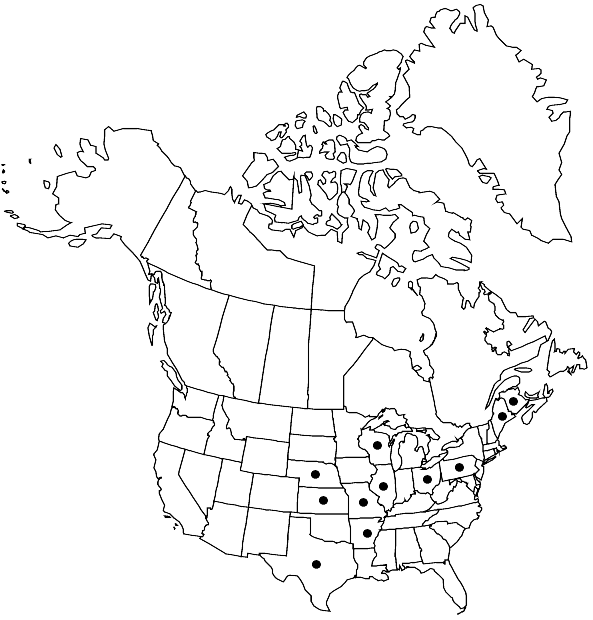Difference between revisions of "Schistidium crassithecium"
Mem. New York Bot. Gard. 93: 254, figs. 135, 136. 2005,.
FNA>Volume Importer |
imported>Volume Importer |
||
| (3 intermediate revisions by 2 users not shown) | |||
| Line 31: | Line 31: | ||
-->{{#Taxon: | -->{{#Taxon: | ||
name=Schistidium crassithecium | name=Schistidium crassithecium | ||
| − | |||
|authority=H. H. Blom ex B. H. Allen | |authority=H. H. Blom ex B. H. Allen | ||
|rank=species | |rank=species | ||
| Line 46: | Line 45: | ||
|publication year= | |publication year= | ||
|special status= | |special status= | ||
| − | |source xml=https:// | + | |source xml=https://bitbucket.org/aafc-mbb/fna-data-curation/src/2e0870ddd59836b60bcf96646a41e87ea5a5943a/coarse_grained_fna_xml/V27/V27_289.xml |
|subfamily=Grimmiaceae subfam. Grimmioideae | |subfamily=Grimmiaceae subfam. Grimmioideae | ||
|genus=Schistidium | |genus=Schistidium | ||
Latest revision as of 21:25, 5 November 2020
Plants in compact cushions or tufts, blackish olivaceous. Stems 0.4–1.2 cm, central strand distinct. Leaves erect or erect-incurved, sometimes with apices recurved when dry, ovate-lanceolate, keeled distally, 1.5–2 mm, 1-stratose or sometimes 2-stratose in striae distally; margins plane throughout or sometimes narrowly recurved proximally, smooth, 2-stratose or multistratose distally; apices acute, usually ending in a short, fleshy, multistratose apiculus, usually rounded, but sometimes acute and hyaline tipped; costa percurrent or short-excurrent, smooth; basal marginal cells quadrate or short-rectangular; distal cells rounded, subquadrate, or short-rectangular, 5–10 µm wide, sometimes weakly bulging-mammillose, straight or weakly sinuose. Sexual condition dioicous. Capsule light brown, cupulate, or short-cylindric, 0.7–1 mm, sometimes lightly furrowed when dry; exothecial cells mostly irregularly elongate, mixed with patches of unevenly angular cells, very thick-walled; rim red; stomata present; peristome squarrose, 250–300 µm, reddish orange, densely to finely papillose, strongly perforated. Spores 14–16 µm, smooth or granulose.
Phenology: Capsules mature late spring to early summer.
Habitat: Limestone rocks, often near streams and rivers but also in glades and on exposed bluffs
Elevation: low to moderate elevations (200-400 m)
Distribution

N.B., Ark., Ill., Kans., Maine, Mo., Nebr., Ohio, Pa., Tex., Wis.
Discussion
Schistidium crassithecium is one of the most easily recognized species of the genus. Even though usually sterile, its thick leaf margins, appearing club-like in transverse-section, but resembling marginal curvatures macroscopically, and the fleshy apiculi that terminate the leaves are distinctive characters. The fleshy apiculus, its laminal areolation, and features of the sporophytes appear to relate this species to S. cinclidodonteum and S. occidentale.
Selected References
None.